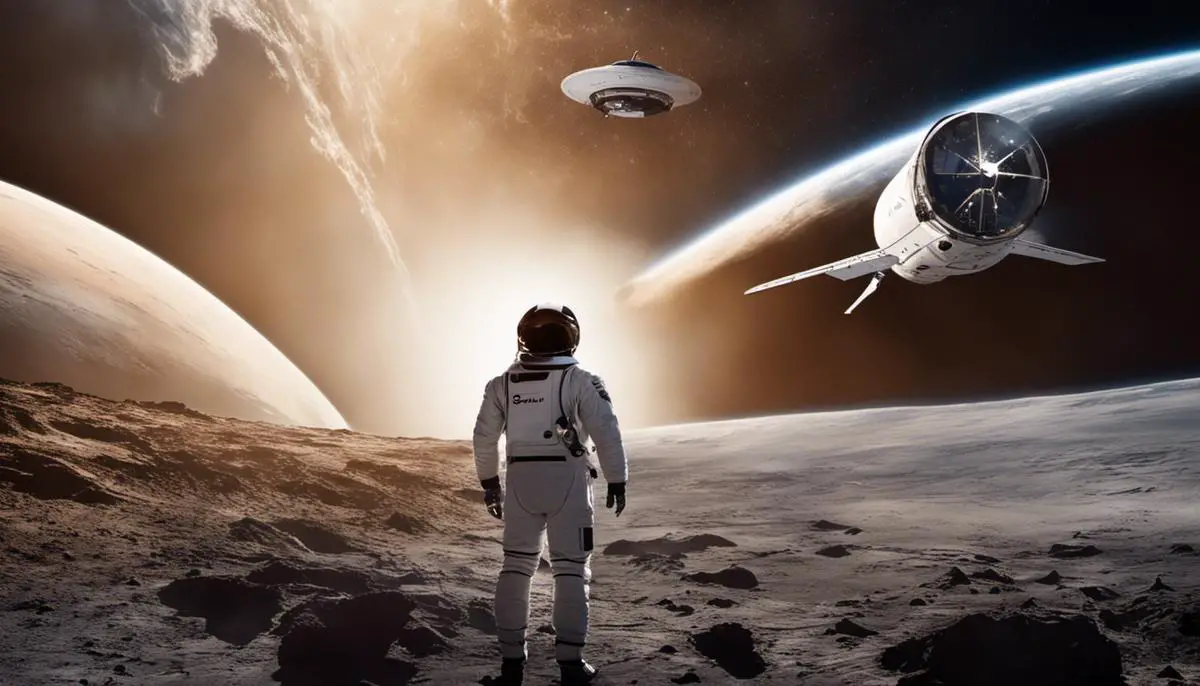The magic of exploration has always been a human endeavor, pushing boundaries and driving us to look past our horizons and into the stars. That same enchanting allure of the unknown is the cornerstone of SpaceX, a private aerospace manufacturer and space transportation company, founded by one of the eminent visionaries of our time, Elon Musk. SpaceX, born from Musk’s profound desire for space colonization, is an emblem of revolution, standing as a staunch challenge to traditional paradigms of space exploration. This exploration focuses on the inspirational journey of SpaceX, chronicling its history, key achievements, current projects, future plans, and its significant impact on the space industry. Also, it takes a deep dive into the life of the man who believes humanity’s future lies in becoming a multi-planetary species, Elon Musk himself.
The Genesis of SpaceX
The Spark: Elon Musk’s Vision
Elon Musk, a successful entrepreneur known for PayPal and Tesla Motors, first envisioned SpaceX (Space Exploration Technologies Corporation) in the early 2000s. Musk’s passion for space exploration and his desire to help humans become a multi-planetary species fueled his ambition. He was particularly interested in Mars and mused about sending a greenhouse full of hardy plants there as a way of fueling public interest in space exploration.
Foundation of SpaceX
SpaceX was officially founded in 2002 with the main goal of reducing space transportation costs and eventually making it possible for humans to live on other planets. Based in Hawthorne, California, the company began with a few employees and has since grown into a leading player in the aerospace industry, employing thousands of individuals.
With his own money, Musk embarked on developing the Falcon 1, SpaceX’s first rocket. It was a risky venture, considering many private companies had tried and failed to achieve orbital flight.
SpaceX’s Early Projects
SpaceX’s maiden launch in 2006, however, ended in failure, but this did not deter Musk from his vision. After three more failed launches, the fifth attempt achieved orbit in 2008, proving that Elon Musk’s private venture could reach space, a domain hitherto ruled by governments.
That same year, SpaceX was awarded a contract from NASA to continue the development and test of the Dragon spacecraft as part of the Commercial Orbital Transportation Services (COTS) program. The Dragon spacecraft’s primary function is to carry cargo, and eventually crew, to International Space Station (ISS).
Mission Statement and Long-Term Goals
SpaceX’s mission statement embodies Musk’s vision for the company: “to revolutionize space technology, with the ultimate goal of enabling people to live on other planets.” The long-term goal is focused on creating a self-sustaining colony on Mars, a venture that Musk believes will “help ensure humanity’s survival by providing a second, fully self-sufficient human outpost in our solar system.”
This mission fuels all of SpaceX’s projects, from the further development of the Dragon spacecraft to the introduction of the Starship, a reusable spacecraft currently being developed to carry up to 100 passengers to Mars.
More SpaceX Projects
As of SpaceX’s two-decade history, it has launched numerous satellites, sent cargo and astronauts to the International Space Station, and even sent a car into space.
It’s currently working on a satellite internet constellation called Starlink. The goal of this project is to blanket the earth with internet coverage, especially reaching areas where access was previously difficult or impossible. The revenue from this service will help fund Musk’s ambition to colonize Mars.
In a bid to transform human life into a multiplanetary existence, Elon Musk established SpaceX, setting an ambitious goal to establish human base on Mars. The journey towards this grand vision, however, has been anything but smooth, marked by extensive trials and significant achievements. Balancing on the knife’s edge of unparalleled innovation and daunting challenges, SpaceX has emerged as a formidable player in the aerospace industry. Guided by Musk’s assertive philosophy that, “When something is important enough, you do it even if the odds are not in your favor,” the company continues pressing forward.
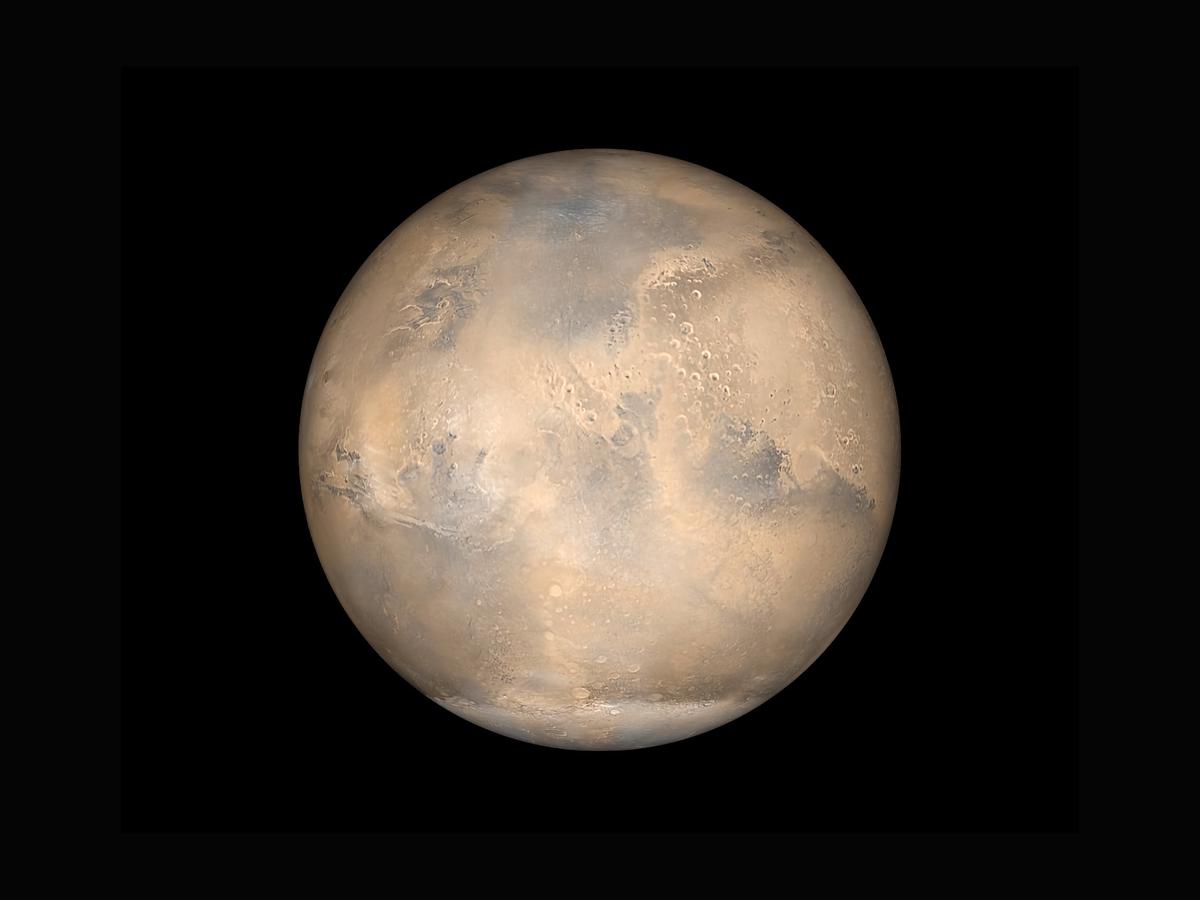
The Milestones and Achievements of SpaceX
Groundbreaking Achievement: Launch of Falcon 1
True to Musk’s spirit, SpaceX stood its ground despite initial setbacks. This determination culminated in a landmark achievement on September 28, 2008, when the company succeeded in launching Falcon 1, a two-stage liquid-fueled rocket, from the Pacific Atoll of Kwajalein. This event is heralded as the first time a privately-funded, liquid-fueled craft achieved Earth orbit. The road leading up to this momentous occasion was riddled with obstacles, including three failed attempts. Yet, SpaceX’s persistence illuminated the path to success, demonstrating their unwavering commitment to their vision.
Active ISS Service Deliveries
Since 2012, SpaceX has actively been providing service deliveries to the International Space Station (ISS). This followed the launch of the Dragon spacecraft aboard a Falcon 9 rocket on May 22, 2012, and the subsequent journey to the ISS. This marked the first time a company had sent a spacecraft to the space station. The Dragon spacecraft was able to deliver cargo, and it successfully returned to Earth with a load of return cargo. This achievement paved the way for SpaceX’s ongoing resupply services to the ISS.
Development of Reusable Rockets
SpaceX has pioneered the development of reusable rockets, which has the potential to drastically reduce the cost of space travel. The principle is simple: most of the cost of space travel comes from building the rocket, which traditionally can only be used once. If the rocket can be reused, it dramatically cuts the cost of each journey into space. The first successful landing of an orbital rocket’s first stage on land was achieved by SpaceX’s Falcon 9 on December 21, 2015. Then on April 8, 2016, the Falcon 9 achieved the significantly more difficult feat of landing on a ship at sea.
Starship: Next-Generation Spacecraft
SpaceX’s latest project in the works is Starship, a completely reusable transportation system designed to carry both crew and cargo to Earth orbit, the Moon, Mars, and beyond. Starship represents one of SpaceX’s most ambitious plans yet and is hoped to facilitate humans becoming a multiplanetary species. On December 9, 2020, SpaceX’s Starship prototype Serial Number 8 (SN8) completed a high-altitude flight test, marking a significant step forward in Elon Musk’s vision for interplanetary travel.
Bridging the Gap in Space Travel
SpaceX has successfully bridged the gap in American space travel following the retirement of NASA’s Space Shuttle in 2011. On May 30, 2020, SpaceX’s Crew Dragon spacecraft launched from a Falcon 9 rocket with NASA astronauts aboard – a first for a commercially built and operated crewed spacecraft. The mission, named Demo-2, marked the long-overdue return of human spaceflight launches from the United States.
A Peak into the Future: SpaceX’s Milestones
In February 2018, SpaceX, led by Elon Musk, positioned itself as a key player in the world of interplanetary missions. This was marked by the successful launch of their Falcon Heavy, which is currently the most powerful operational rocket in the world – twice as powerful as its competitors. The rocket’s payload carried an unusual testimonial to this achievement – a Tesla Roadster manned by a mannequin known as ‘Starman’, which entered an orbit around the Sun. This demonstration further substantiated the role SpaceX might play in upcoming space expeditions.
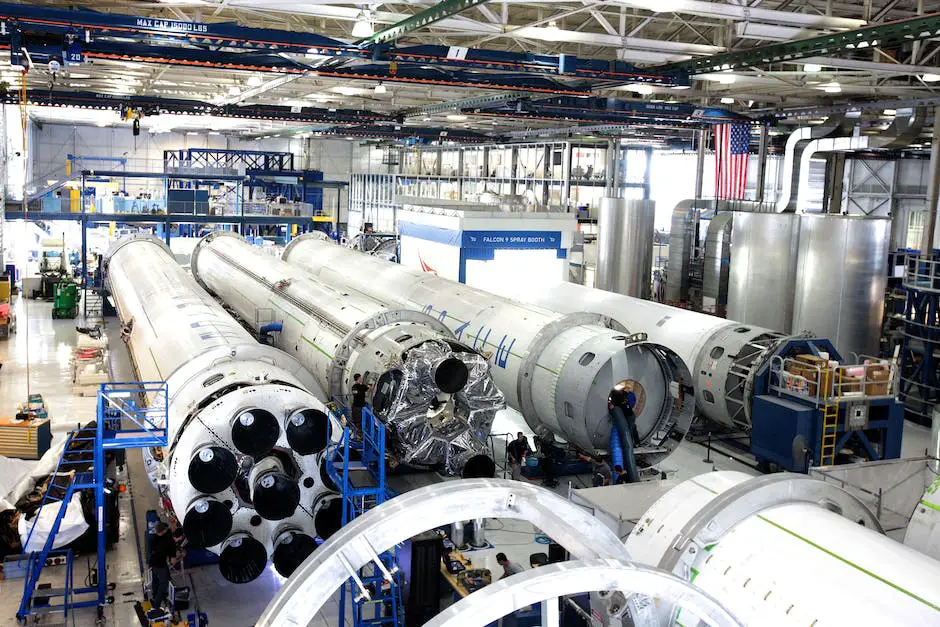
Current Projects and Future Plans of SpaceX
Democratizing Internet Access: SpaceX’s Starlink
Alongside these advancements in space technology, SpaceX ventured into a mission to democratize internet access across the globe through a concept called Starlink. A constellation of small satellites, lower in Earth’s orbit to minimize internet latency, forms the crux of this project. As it stands, SpaceX has launched over 1,000 of these satellites, with a goal of deploying around 12,000 eventually.
At the moment, Starlink is undergoing beta testing, providing coverage in select parts for the U.S., Canada, the UK, and few other regions. But, SpaceX is looking at a larger picture – to extend this coverage globally by 2022. The most transformative aspect of this project is its potential to connect rural and remote locations, where high-speed internet access is currently absent or exorbitantly priced.
SpaceX Starship: The Vehicle for Mars Colonization
Elon Musk’s ultimate vision is to make humanity a multiplanetary species. A critical part of achieving this is the SpaceX Starship, a reusable rocket system currently under development. Starship is designed to carry up to 100 humans, cargo, or a mix of both to destinations in outer space.
The rocket’s design and construction are tailored toward facilitating travel to Mars. Musk’s ambitious goal is to establish a self-sustaining colony of a million people on the red planet by 2050, using a fleet of Starships to transport them.
Before any humans set foot on Mars, SpaceX plans several unmanned missions to land on Mars and return to Earth. These missions will gather crucial data about interplanetary travel, Martian landing sites, and resources available on Mars.
Future Missions and Launches
SpaceX has garnered a busy roster of upcoming launches and missions, including but not limited to commercial satellite launches, NASA missions, and international science missions. In particular, the Crew Dragon spacecraft is set to ferry more astronauts to the International Space Station (ISS) for NASA. SpaceX’s manifest also includes the first private astronaut mission, called Axiom Mission 1, and the first all-civilian mission, Inspiration4, both scheduled for 2021.
While working on these ongoing and future projects, SpaceX continues to innovate, making strides towards full rocket reusability, a key principle in Musk’s vision to reduce space travel costs.
SpaceX’s Role in The Artemis Program and Lunar Gateway
One of SpaceX’s pivotal roles is its involvement in NASA’s Artemis program. NASA selected SpaceX’s Starship to carry the next Americans to the lunar surface as part of this initiative. The ambitious Artemis program has set its target to return humans to the moon by 2024, paving the way for sustainable exploration by the end of the decade, which serves as a stepping-stone for future Mars missions.
On top of that, SpaceX is also playing a significant role in the Lunar Gateway project. The Lunar Gateway, an orbital spaceship around the moon, will serve multiple functions: living quarters for astronauts, a lab for scientific innovation, and a docking station for visiting spacecrafts. SpaceX’s Falcon Heavy rocket has been commissioned to launch the foundational pieces of the Gateway, the Power and Propulsion Element (PPE) and the Habitation and Logistics Outpost (HALO) in 2024.

The Impact of SpaceX on the Space Industry
The Revolutionary Approach of SpaceX
Since its inception in 2002, SpaceX (Space Exploration Technologies Corp.) has been leading a revolution in space exploration under the visionary leadership of Elon Musk. A noteworthy aspect of SpaceX’s philosophy that marked its deviation from traditional norms in space missions is its commitment to the concept of reusable rockets. Historically, the standard practice in space travel has been to use expendable rockets, with parts typically discarded in the ocean after launch.Encouraging Competition in the Space Industry
SpaceX also ignited a fierce competition in the space industry, especially concerning private space travel. Before SpaceX’s achievements became widely acknowledged, the space industry was almost exclusively dominated by government agencies like NASA in the United States, Roscosmos in Russia, and the European Space Agency. However, SpaceX’s remarkable accomplishments, which include the first privately-funded liquid propellant rocket to reach orbit (Falcon 1 in 2008), have proven that private companies can also contribute significantly to space exploration. This success has paved the way for other private space ventures, leading to what some have dubbed the “new space race” – an intense competition not between global superpowers, but between commercial entities.Commercial Space Travel and Exploration
Perhaps no area of SpaceX’s impact is more transformative than its strides towards making space travel commercial and commonplace. SpaceX’s Dragon spacecraft has successfully delivered cargo to the International Space Station multiple times, a task once reserved only for government-run trips. The company has also made significant progress with its Crew Dragon spacecraft, designed to transport human passengers to and from space. In May 2020, SpaceX marked a milestone when the Crew Dragon, launched by a Falcon 9 rocket, successfully transported two NASA astronauts to the ISS. This marked the first time a commercially built and operated spacecraft carried humans to the orbital space station.The Broader Implications of SpaceX
The implications of SpaceX’s activities for the future of global space exploration are profound. The lowered costs of space missions due to reusable rockets could lead to increased frequency of launches and space exploration activities. The successful transportation of astronauts to the ISS by a privately-operated spacecraft also sets a precedent for future manned missions, potentially to the Moon or even Mars. SpaceX’s Starship, designed for long-duration cargo and passenger flights to outer space, suggests an even more ambitious goal: to make life interplanetary. Whether or not Musk’s vision will be fully realized remains to be seen, but there’s no doubt that the possibilities for space exploration are more abundant now than ever before, thanks largely to the efforts of SpaceX. The company’s accomplishments also have significant implications for global space policy and regulations. As commercial entities play an increasingly central role in space activities, traditional space governance frameworks – which were created primarily with nation-state actors in mind – might need to be updated to accommodate new actors and scenarios.SpaceX has made significant strides in pushing the boundaries of the space industry, laying the groundwork for an exciting new era of space exploration and technological development. The company’s pioneering initiatives and successes have disrupted traditional expectations, illuminating new possibilities for the future of space travel and exploration internationally.
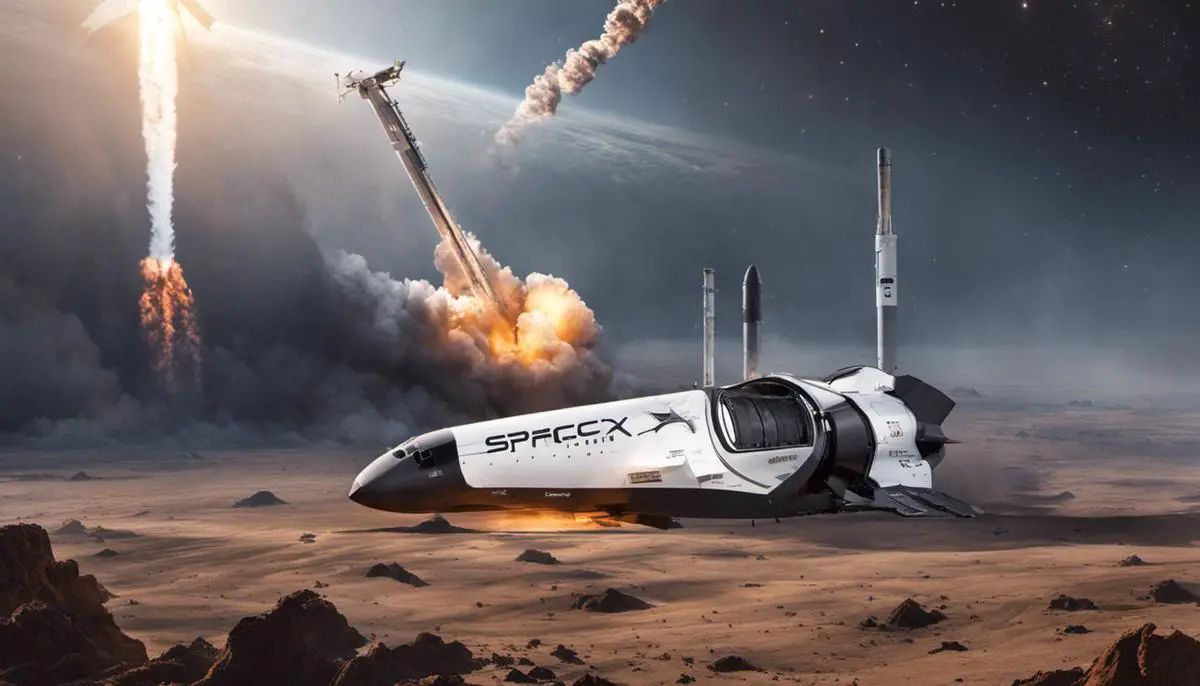
Elon Musk: The Man Behind SpaceX
The Visionary Mind Behind SpaceX: Elon Musk
Elon Musk, born in 1971 in Pretoria, South Africa, is widely recognized as one of the most trailblazing tech entrepreneurs of this century. His educational background encompasses Physics and Economics, and his life has been characterized by a relentless pursuit of transcending limitations, always striving to redefine the realm of possibility.
Business Philosophy and Leadership Style
Elon Musk’s business philosophy revolves around creating radical breakthroughs for the betterment of humanity. He’s well-known for his “First Principles Thinking,” an approach that involves breaking down complex problems to basic principles and reasoning up from there, rather than relying on past precedence.
His leadership style embodies a maverick approach, in which he often pushes his team beyond their perceived limitations to achieve remarkable feats. A firm believer in leading by example, Musk himself is known for his rigorous work schedules and demanding expectations, which he expects his team to match.
It should be noted that Musk’s management style has both its admirers and critics. While some praise his visionary leadership, others point to high employee turnover rates and stress levels within SpaceX.
Vision for SpaceX
Elon Musk conceptualized SpaceX (Space Exploration Technologies Corp.) in 2002 with an audacious vision: to make life multiplanetary. Musk’s vision for SpaceX is not just about launching rockets; it is about laying the groundwork for the colonization of Mars.
Under Musk’s leadership, SpaceX has made incredible strides in space technology. It has developed and launched the Falcon 1, Falcon 9, Falcon Heavy, and Dragon spacecraft to supply the International Space Station (ISS) with cargo. A significant milestone came when SpaceX became the first privately funded company to send a spacecraft (Dragon) to the ISS in 2012.
Musk’s desires are not limited to Mars. He envisions a future where humans inhabit multiple planets, venturing even further into the cosmos.
Other Ventures & Musk’s Unique Entrepreneurial Approach
Beyond SpaceX, Musk has a significant number of other technological ventures. Tesla, Neuralink, The Boring Company, and SolarCity are all products of Musk’s unique entrepreneurial approach, challenging conventional methods and innovating at every turn.
At Tesla, Musk revolutionized the electric car industry by creating electric vehicles that not only matched but exceeded the performance of their petrol-powered counterparts in many aspects.
Neuralink is another of his ambitious projects, which aims to merge artificial intelligence with the human brain. Meanwhile, through The Boring Company, Musk proposes an underground transit network as a solution to traffic congestion.
Musk’s companies share a common thread: a mission to solve problems that Musk believes are vital to humanity’s future. His approach is said to be guided by the ‘5 Whys’ technique, a problem-solving principle used to explore cause-and-effect relationships.
Impact on the Space Industry
Elon Musk’s SpaceX venture has undeniably made a significant impact on the space industry. It shattered several long-held conventions, including the idea that space exploration was exclusively the domain of government entities.
Musk’s SpaceX helped democratize space by making launches more cost-effective through rocket reusability, giving startups and researchers access to space. These radical breakthroughs have undoubtedly set the pace for the new era, ‘Space 2.0’, where space is not just seen as the final frontier, but also as a new market to venturize and monetize.
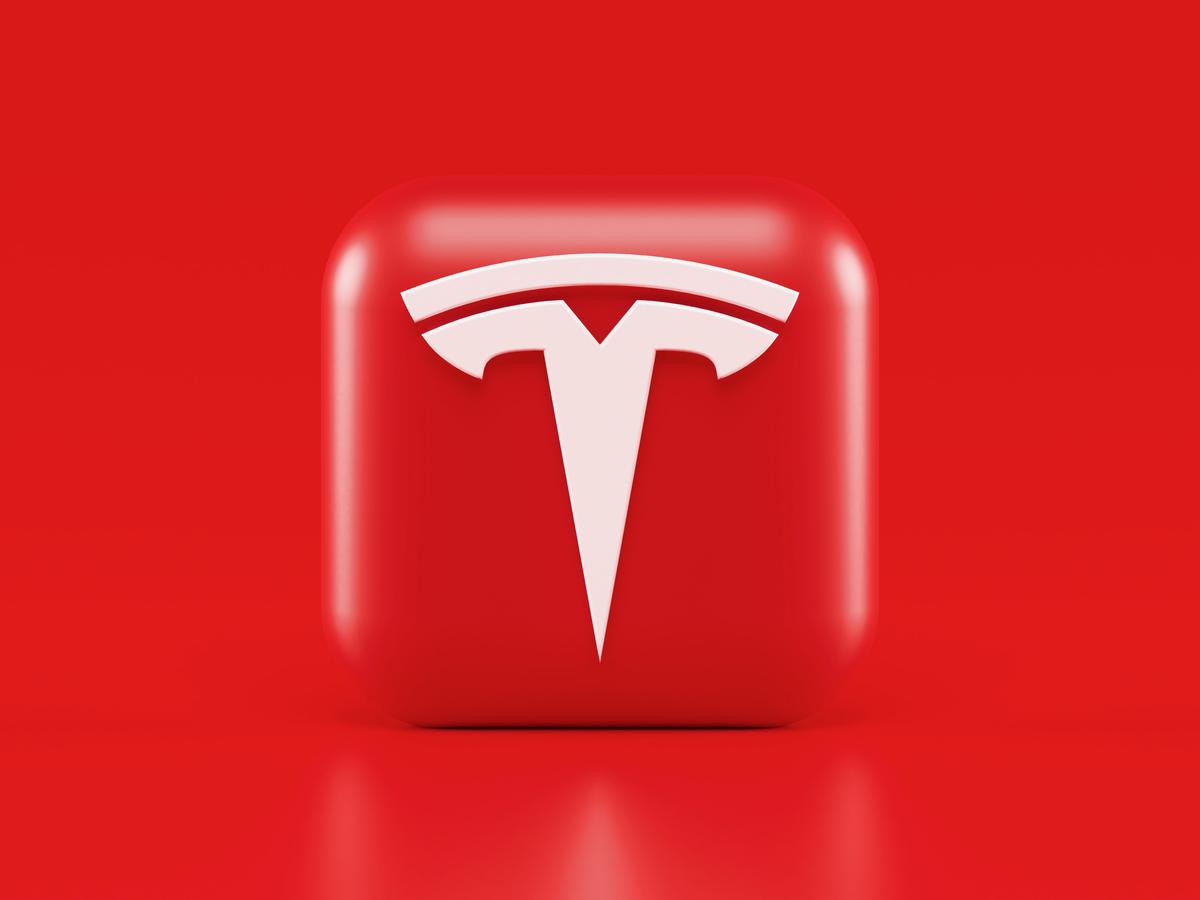
Photo by alexbemore on Unsplash
SpaceX, under Elon Musk’s vibrant leadership, has proven itself as an innovative power player in the space industry. It has not only set various milestones in space travel but has also significantly transformed the industry’s landscape, making space exploration more accessible and efficient. As we venture forth into the future, the role of this pioneering establishment is notably far-reaching, with ramifications affecting the way we comprehend space travel. And at the helm of it all stands Elon Musk, a visionary who dreams not only in terms of countries or continents but in terms of planets and galaxies. His audacious vision, coupled with SpaceX’s groundbreaking achievements and ambitious future plans, signal the dawn of a new era in space exploration, redefining our role in the cosmos.
![]()
